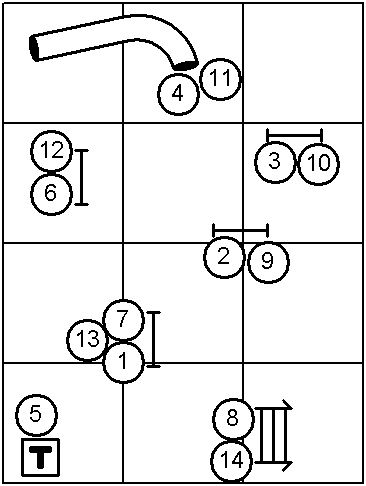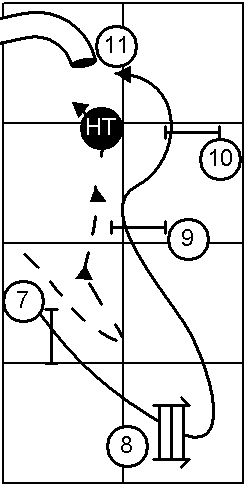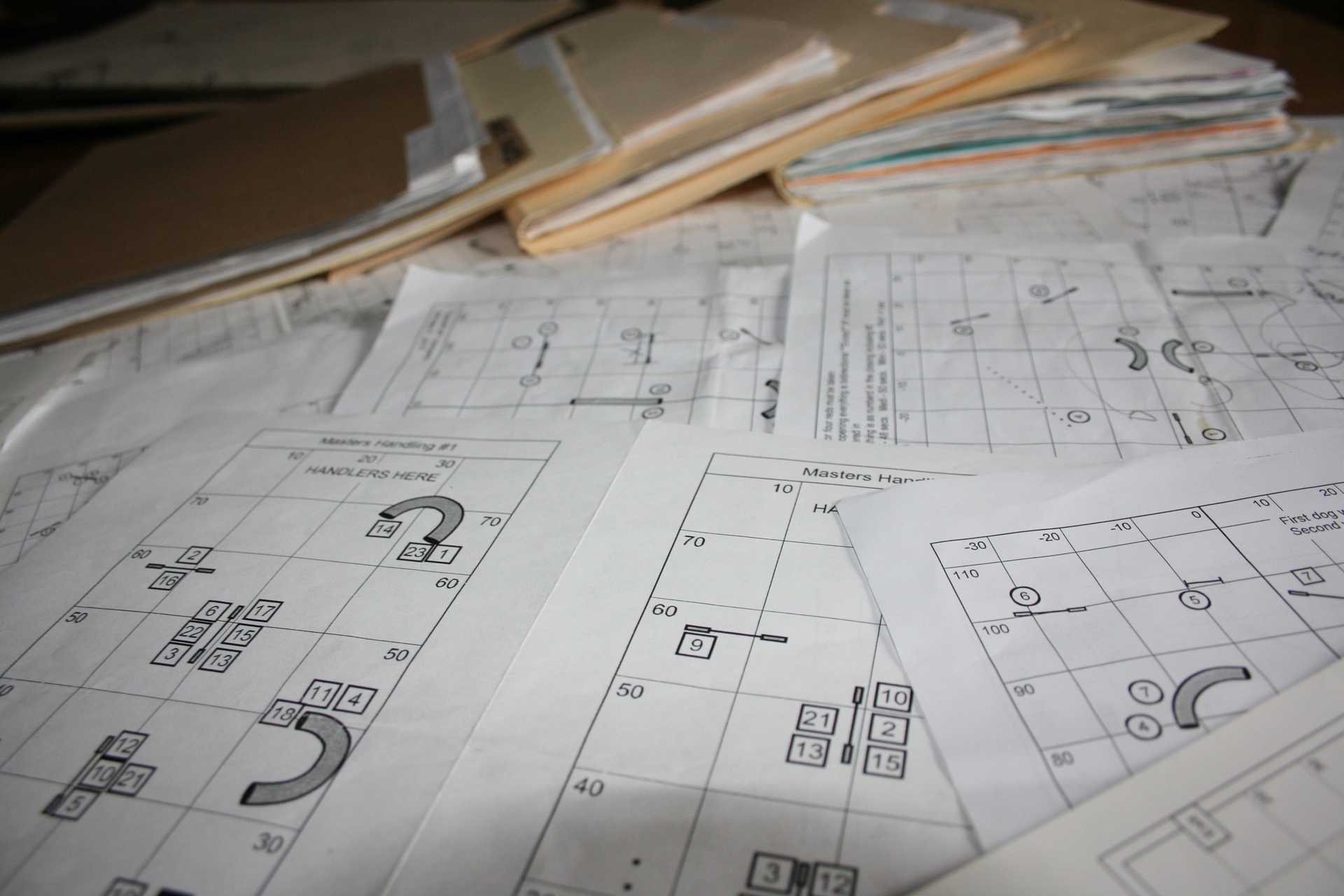Running Dearlove Agility Intermediate Course of 29 Aug 2004
17 Sep 2004
With the Jen Pinder Jumping Workshop, a Flyball Tournament, Labor Day weekend and Milo’s
injury all coming in rapid succession I didn't get to run this course until last Monday. My original ideas are here and here's the course layout:
I trained two groups on the course, one only had two students (everyone is on vacation!) and I ran it with Mr. Peabody and the other Dearlove instructors.
One challenge of this course was getting the setup “correct”. My goal was to set the distance from jump 10 to tunnel 11 as tight a possible (it was actually a couple feet short of legal for an AKC course) so it would require careful handling through the 8-9-10-11 sequence. Specifically, I wanted the dog’s line from jump 8 to 9 point them right to the tunnel. This goal filtered back through the course layout constraining the location of the other jumps.
All the obvious off-course opportunities appeared during the runs:
- Pushing the dog past the tunnel entrance after jump 3 by racing the dog to the jump (not signalling a short stride to jump 3)
- The long run to the table from the tunnel had a couple dogs tuck behind their inattentive handlers to take jump 6/12
- A Post Turn Learning the Post TurnPost Turn/Shoulder Pull/Pivot Turn at jump 6 didn't get most dogs to turn sharply enough to get to jump 7
- Slow reactions allowing "tunnel suck" to attract dogs going from jump 9 to jump 10

By compressing the distance from jump 10 to tunnel 11 it also almost forced the handler to Front Cross Learning the Front Cross - VideoFront Cross on the landing of the triple and Cross Rear Cross Learning the Rear CrossRear Cross on the take off of jump 10. One of my reasons for this course design was to combat what I’ll call “Front Crossitis”; an inflamed desire to use a Front Cross in all lead change situations. I’m sometimes guilty of this bias and I see it in the handling in class too. So I wanted to have handlers think more about using rear crosses.
The rear cross handling is shown in the left diagram below. The main difficulties with this approach were getting to the front cross and late rear crossing. Pam’s Flash was turning so tightly around the jump stanchion she would sometimes clip it. Some handlers were successful with a push-pull style handling. Key to this approach is the handler getting to the dog’s landing after jump 9 and pushing them out to the right and over jump 10. Then a half turn to make sure the dog found the entrance as shown in the right hand diagram below.
I hate to sound like a broken record but the difference between the two approaches boils down to where/when you want to change your dog’s lead leg. I like the first approach because you change the dog’s lead before jump 9 where there is plenty of room; so between jumps 9 and 10 the dog only makes one lead change. The second approach requires the dog to make two lead changes between jumps 9 and 10. There is also possible safety issue, in the push-pull approach the handler slow to the landing spot risks a collision with the dog. There are times when getting in the dog’s path in order to influence it is perfectly fine, in some runs it was a little close for my liking. But for the fast handler it is really just scooping the dog on the landing and redirecting them over jump 10.


Set this one up and give it a try!
If you enjoyed this article won't you please:  Thanks!
Thanks!
Related Tags
Related Articles:
- Running Dearlove Intermediate Course of 16 Aug 2004
- Running Dearlove Intermediate Course of 4 Oct 2004
- Running Dearlove Advanced Course of 16 Aug 2004
- Running Dearlove Intermediate Course of 20 Sep 2004
- Dearlove Nested Class Course - Aug 17 and 24 2006
- Dearlove Intermediate Course - Front vs. Rear Crosses
